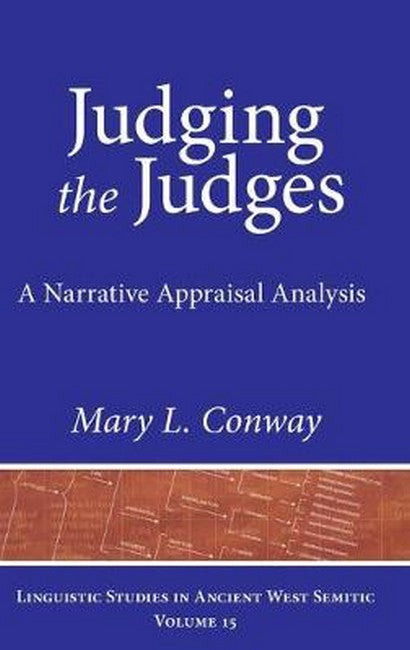List of Figures and Tables
Acknowledgments
Abbreviations
Chapter 1. Introduction
1.1. Rationale 1
1.2. Previous Approaches to Judges
1.3. Overview of This Study
Chapter 2. The Background to Appraisal Theory
2.1. Purpose
2.2. Martin and White’s Original Appraisal Theory
2.3. Representation of Appraisal in System Networks
2.4. Appraisal Theory in Martin and Rose
2.5. The Need for a Revised Appraisal Model
Chapter 3. The Narrative Appraisal Model
3.1. The Revised Model
3.2. Summary of Changes
3.3. The Appraisal Model and Its Adaptation to Hebrew Narrative
3.4. The Narrative Appraisal Model
3.5. Components of the Narrative APPRAISAL Network
3.6. The APPRAISAL Analysis Tables
3.7. Procedure: Moving from the APPRAISAL Tables to Interpretation
3.8. Conclusion
Chapter 4. The Second Introduction (Judges 2:6–3:11)
4.1. Purpose
4.2. Introductory Remarks
4.3. The Double Introduction and the Deuteronomistic Question
4.4. Definition of Judge
4.5. Analysis of the Text
Chapter 5. The Ehud Narrative (Judges 3:12–30)
5.1. Purpose
5.2. Introductory Remarks
5.3. Analysis of the Text
5.4. Conclusions
Chapter 6. The Deborah-Barak-Jael Narrative (Judges 4)
6.1. Introductory Remarks
6.2. Analysis of the Text
6.3. Conclusions
Chapter 7. The Gideon Narrative (Judges 6–8)
7.1. Introductory Remarks
7.2. Analysis of the Text
7.3. Conclusions
Chapter 8. The Jephthah Narrative (Judges 10:16–12:7)
8.1. Introductory Remarks
8.2. Analysis of the Text
8.3. Conclusions
Chapter 9. The Samson Narrative (Judges 13:1–16:31)
9.1. Introductory Remarks
9.2. Analysis of the Text
9.3. Conclusion
Chapter 10. Conclusion
10.1. Purpose
10.2. Introduction
10.3. Critique of the New Narrative Appraisal Model
10.4. Interpretive Conclusions
10.5. Suggestions for Further Research
Appendix: APPRAISAL Table
Bibliography
Index of Scripture

